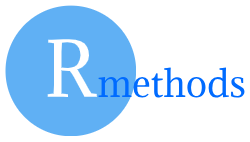Functions are one of the core building blocks of programming in R. They are used to encapsulate a sequence of statements that perform a specific task, making the code reusable, organized, and efficient. In R, almost everything is a function, even fundamental operations like addition (+) or printing output (print()).
What is a Function?
A function in R is a block of code designed to perform a particular task. Functions take inputs (arguments), perform computations, and return outputs.
Syntax of a Function:
function_name <- function(arguments) {
# Function body (code to execute)
return(output)
}
Example:
add_numbers <- function(a, b) {
sum <- a + b
return(sum)
}
add_numbers(5, 3) # Output: 8
Types of Functions in R
1. Built-in Functions: R comes with a rich library of pre-defined functions.
Examples:
mean(): Computes the mean of a vector.summary(): Provides a summary of an object.plot(): Creates various types of plots.
2. User-Defined Functions: These are functions created by users to address specific needs or repetitive tasks.
Example:
square <- function(x) {
return(x^2)
}
square(4) # Output: 16
3. Anonymous Functions: Functions without names are called anonymous functions. They are often used inside other functions like apply() or lapply().
Example:
sapply(1:5, function(x) x^2) # Output: 1 4 9 16 25
Special-Purpose Functions:
These functions are tailored for specific tasks or domains, like statistical analysis or visualization.
Examples:
lm() for linear models, ggplot() for advanced graphics.
Purpose of Functions
Functions serve multiple purposes:
- Code Reusability: Write once and use the function multiple times.
- Simplification: Break down complex problems into smaller, manageable tasks.
- Readability: Functions make the code easier to understand and debug.
- Encapsulation: Keeps the logic separate, reducing errors.
Concepts Related to Functions
1. Arguments:
- Functions accept inputs called arguments, which can have default values.
- Example
greet <- function(name = “User”) {
paste(“Hello,”, name)
}
greet(“John”) # Output: “Hello, John”
greet() # Output: “Hello, User”
2. Formal vs Actual Arguments:
- Formal arguments: Defined in the function’s declaration.
- Actual arguments: Provided when the function is called.
3. Return Values:
- Functions return outputs explicitly using the
return()function or implicitly by the last evaluated expression.
cube <- function(x) {
x^3 # Implicit return
}
cube(2) # Output: 8
4. Scope of Variables:
Variables created inside a function have local scope and are not accessible outside the function.
Functions vs Expressions and Objects
- Functions: Perform actions and encapsulate logic.
- Expressions: Represent computations (e.g.,
5 + 3). - Objects: Hold data or results (e.g., variables created by function outputs).

